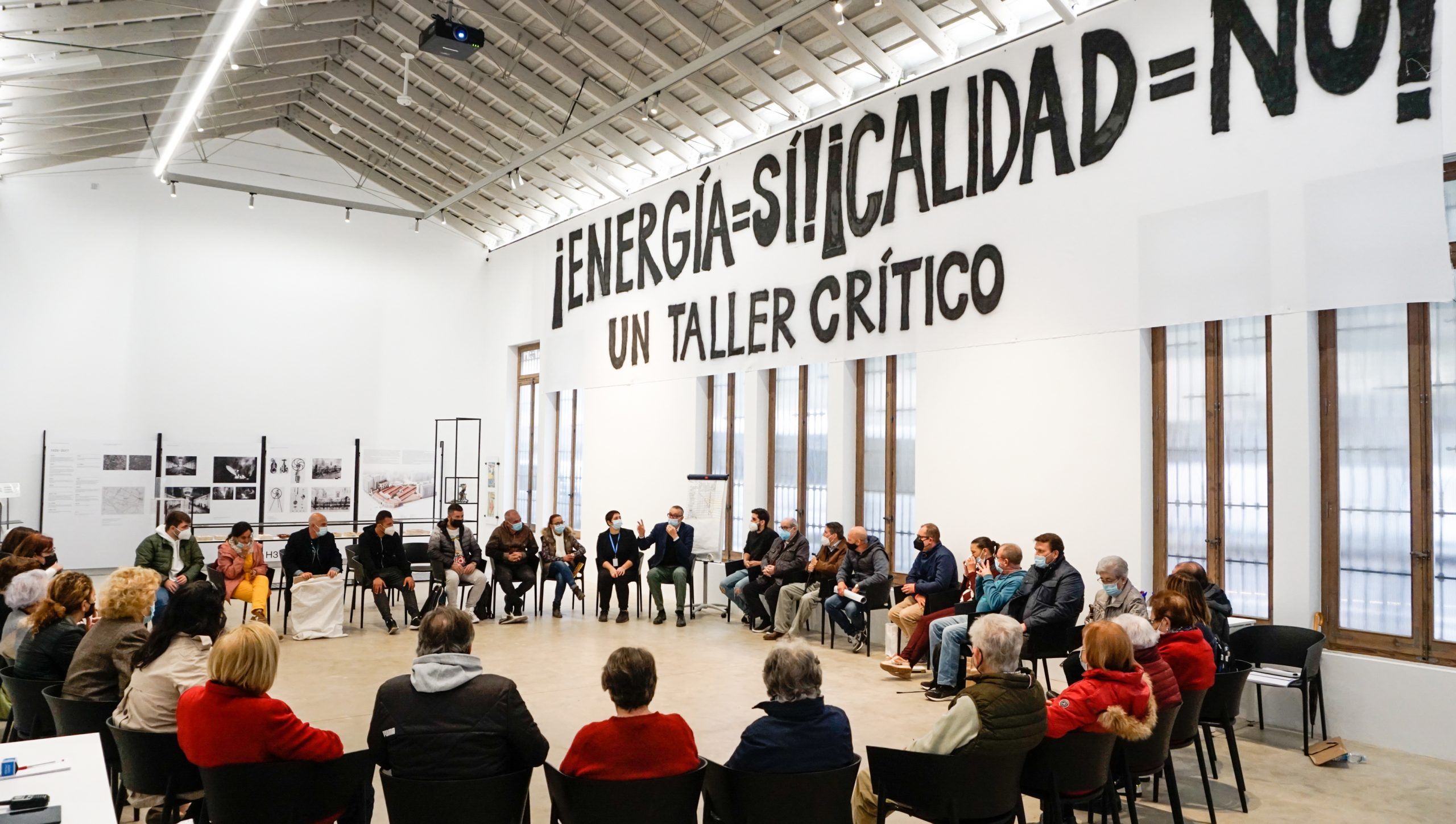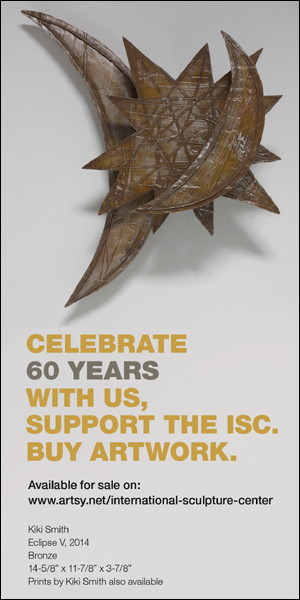For more than 35 years, Thomas Hirschhorn, who lives and works in Paris, has addressed political, economic, social, and cultural issues by creating spaces for thought and events. He continues to fill these spaces, frequently dedicated to philosophers important to his thinking, with simply structured sculptural forms made from inexpensive, “precarious” materials such as plastic and cardboard, film and adhesive tape, paper torn from newspapers, illustrations, photographs, and texts. His use of such everyday materials, which has become his signature, is symbolic. For him, it is an act against elitism and hierarchies, and for the outcasts, the marginalized members of society. He sees his work, which often invites viewer participation, “as trying to stand up, as trying to be active. I am an activist of my own work, trying to get in relation with the world.”
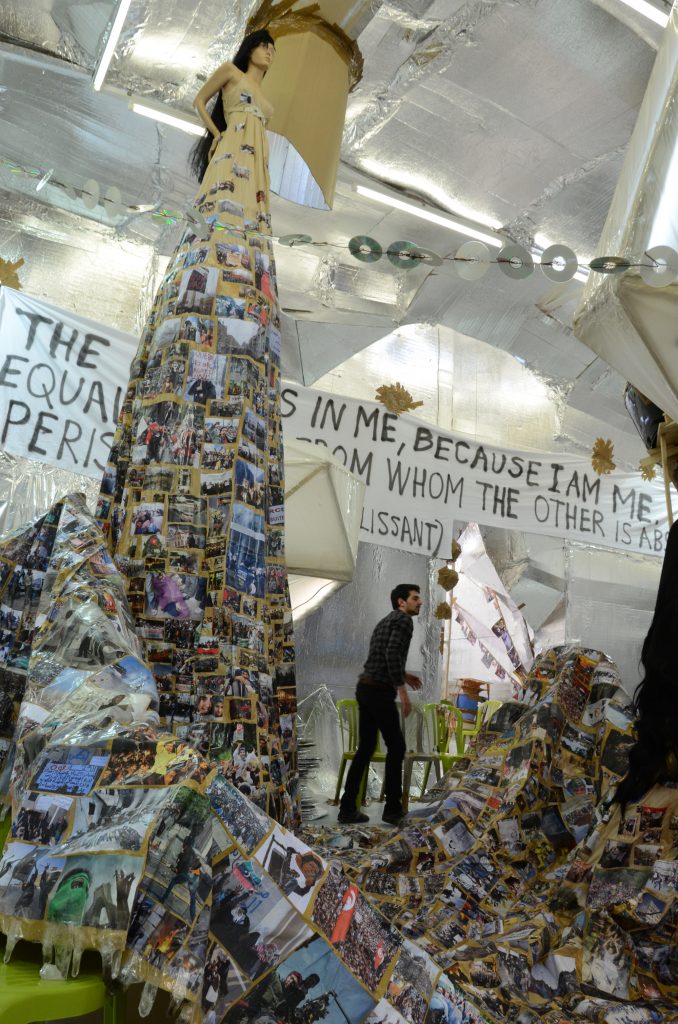
Robert Preece: What would you describe as your main concerns over recent years? Have they changed much?
Thomas Hirschhorn: My mission to make art has not changed since I started my work more than 35 years ago, and this is still not a long enough experience. I want, and always wanted, to create my own term of art. It must be a precarious and critical art—an art that, in its precariousness, criticizes and can be criticized. With my work, I want to touch a “Non-Exclusive Public”—this has always been a guideline, and I’ve created new guidelines such as “Energy = Yes! Quality = No!,” “Presence and Production,” or “Non-shared Responsibility of Authorship” and ‘’Non-progammation.” My concern—in doing my work and in asserting my position—has not changed. Why should it, since I am still trying to strengthen and clarify it?
RP: Why is the term “installation” problematic? And how strongly do you feel about this?
TH: I do not know where the term “installation” comes from, but, to me, it’s a lazy, arty, unclear term, only made to catalogue. No one unfamiliar with the contemporary art-doxa can understand it. It’s an exclusive term, therefore I reject it. “Sculpture”—I am a sculptor—is the term I use and love; everybody understands what a sculpture is, and sculpting is something people have been doing for thousands of years.
In general, I try to use my own terms and not the terms of others. Philosophers invent their own terms and I—as an artist—admire this enormously. Therefore, I want to insist on the term “sculpting.” Like philosophers who are sculpting concepts, I love sculpting, but I am sculpting forms. I can learn from philosophy and philosophers and try to use my own terms as well in relation to art, in relation to my work, and to myself. This is what I want to do—to give terms to my work that make sense to me, perhaps only to me, but to me first, because, as an artist, I have the possibility to do this, I can invent and insist on my own terms.
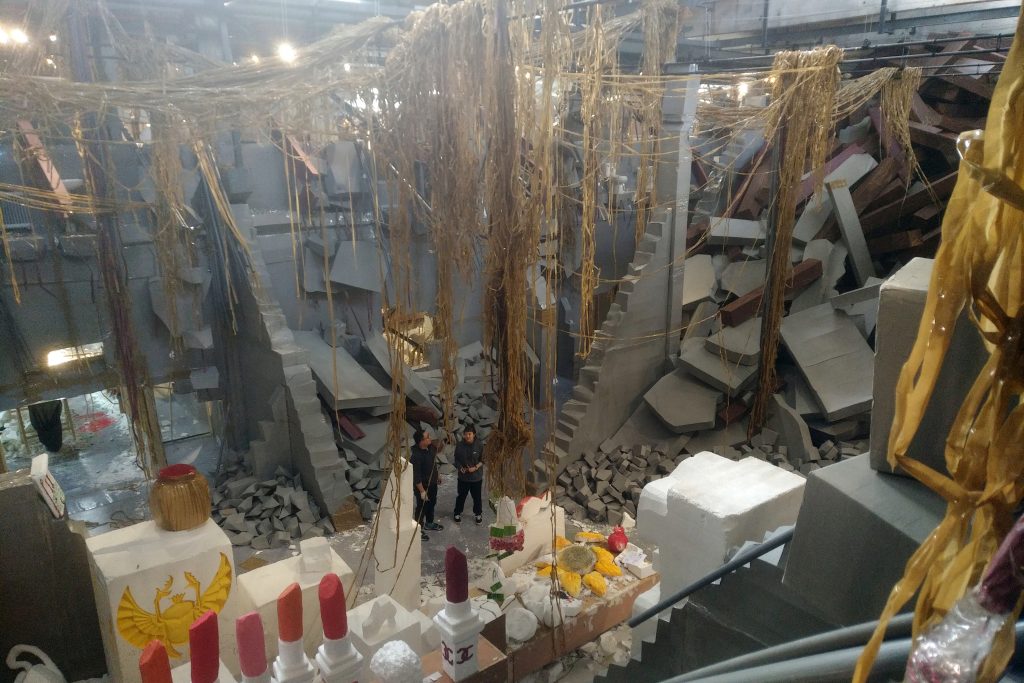
RP: How do you think your graphic design background has affected your work? What range of graphics were you studying, influenced by, and working on?
TH: I studied graphic design at the Kunstgewerbeschule Zürich from 1978 to 1983; it’s an art school in the original Bauhaus tradition, so all classes were dedicated to applied arts like the graphic design course that I studied for five years. Other classes were in fashion design, photography, and textile design. My heroes then were the Russian Suprematists, revolutionary artists and designers like Malevich, Guro, Matyushin, Ekster, Lissitzky, Popova, Mayakovsky, Goncharova, Rodchenko, Rozanova, and Tatlin. What became decisive for me was the discovery of the truly revolutionary artworks of Andy Warhol and Joseph Beuys, through exhibitions at the Kunsthaus Zürich. My first art love was shared between Warhol and Beuys.
RP: If you imagined your favorite philosophers talking among themselves about your recent work, what might they say?
TH: What would Antonio Gramsci, Baruch Spinoza, Gilles Deleuze, Georges Bataille, and Simone Weil say? This makes no sense to me—not only because they are all already dead, but also because the point is not me, Thomas Hirschhorn, but us—all of us living today. The real question to ask is: “What do I have to say?” Why do I love their lives and works? Why do I think their works are relevant today? And which form can I give in order to make clear my love to them? Furthermore, I am not constructing my work on philosophy, theory, or thoughts from others per chance, there are sometimes moments and spaces of similar dynamics. It is important to understand that my need for philosophy is the need for philosophy in my daily life. Besides this, I am ready for those rare and graceful moments of friendship between art and philosophy.
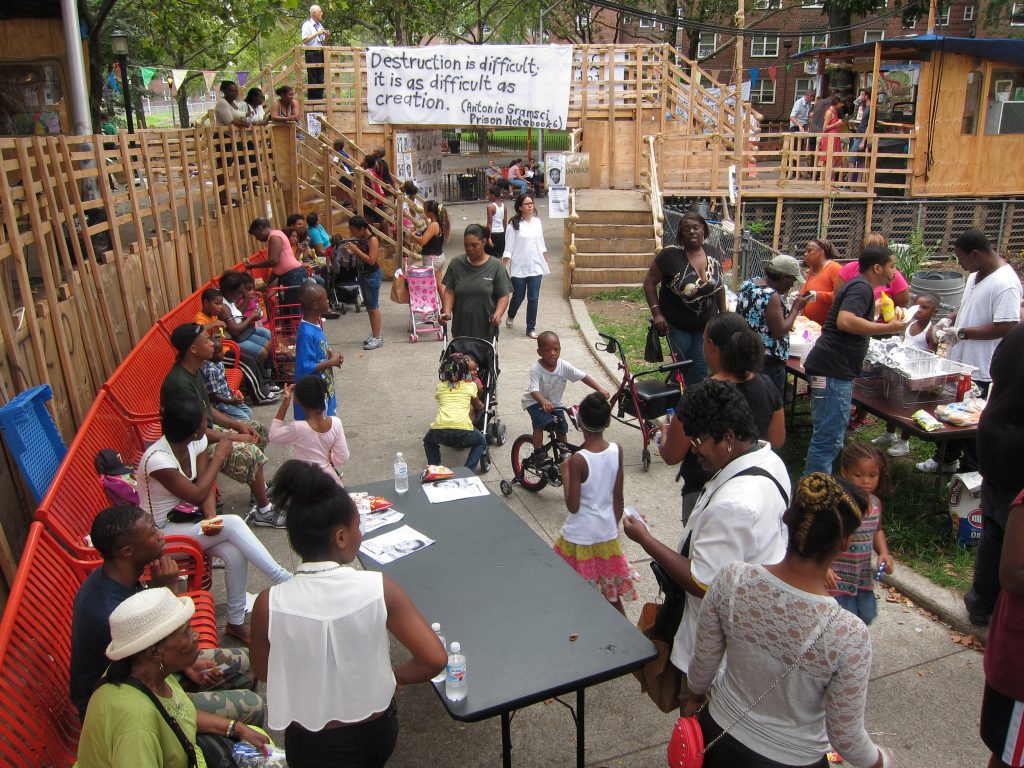
RP: What are a couple of special moments that you recall witnessing in relation to the participatory nature of your latest works? And does that always go well?
TH: The most memorable moments to me in a “Presence and Production” work, which is my term for “participation” (not a goal or an aim, but a lucky outcome) are the moments of grace. Moments of grace are those few moments when a situation of encounter, dialogue, or confrontation with somebody else happens. Such unexpected, unplanned moments give an incredible feeling of happiness. Those empowering moments of grace affirm that the eternity of a precarious, time-limited, and fragile work of art comes from its intensity. The intensity created by its gracefulness is the proof that object character or materiality is not needed to achieve eternity.
Moments of grace can also be moments in which things do not go well. Grace stands clearly beyond success or failure. In failure there can be also be grace. To touch grace, I need to be awake, sensitive, and I have to pay attention. I need to be ready and accept that grace cannot be measured or fixed; I need to accept that grace is not to document and cannot stand for any result.
My last “Presence and Production” artwork was the one-month workshop “Energy = Yes! Quality = No!” (Critical Workshop) (2021) at Bombas Gens Art Center in Valencia. To do this workshop was a beautiful experience, with moments of grace. Graceful is to see what people, not only artists, are creating, and graceful is to experience what people, not only artists, are ready to share with others, and graceful is to learn how people, not only artists, are able to judge a work.
RP: In recent years, what work was the most challenging for you to develop and present?
TH: It was definitely Robert Walser-Sculpture (2019) in Biel/Bienne, Switzerland. We encountered difficulties in getting authorization for the location where I wanted to build the work, in front of the main train station. I had to postpone the project for one year. The really special challenge was to keep the more than 200 city residents—people whom I had met during two years of fieldwork and who had agreed to work in cooperation—all on board. On the one hand, I had to keep fighting for the entire space that I needed for my work. On the other hand, I needed to accept and respond to concerns that residents might have that the work might finally never happen.
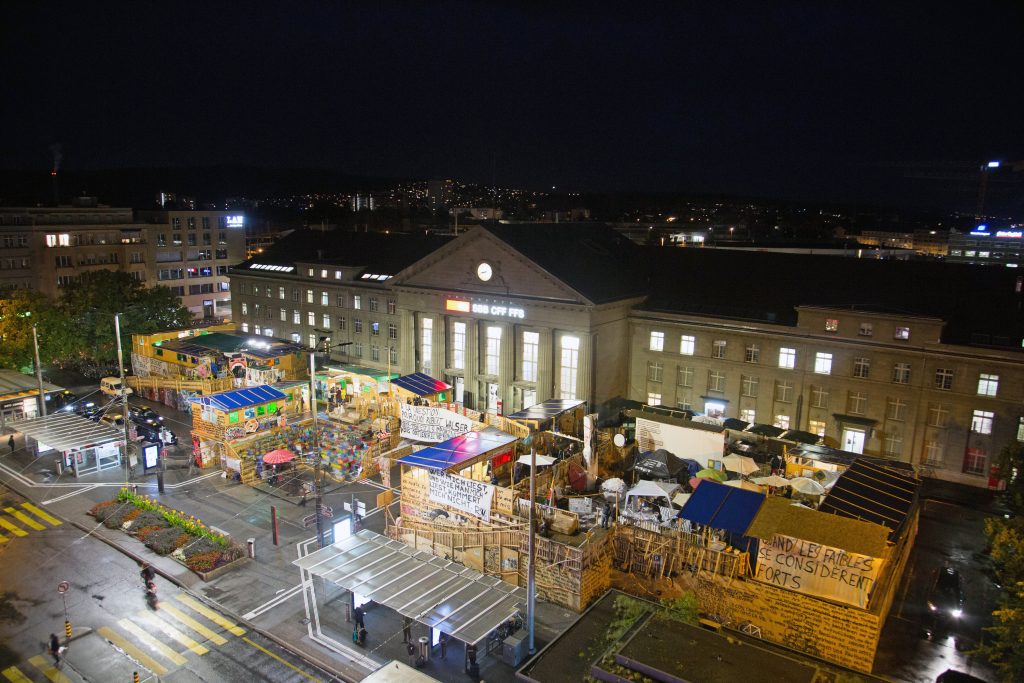
RP: What were you thinking about when developing and shaping Mürrischer Schnee (2014) in relation to the site?
TH: For the group exhibition “Between Heaven and Hell,” held in public space during the winter in the town of Gstaad, I wanted to confront the problematics of today’s so-called “global risks” (global warming, financial crisis, end of resources, war, corruption, terrorism, inequality) with the question: “What is worth living for?” Mürrischer Schnee (roughly translated as “Grumpy snow”) wanted to question values, and the claim of values, such as the meaning of life, responsibility, justice, health. I wanted to lay out what can help, what can constitute the issue, and what can give hope: Love of Art, Love of Poetry, and Love of Philosophy. I wanted to build a critical “theme park” in the outstanding and beautiful landscape of Gstaad, and the aim was to build this precarious sculpture in the very challenging material of snow. It was the first time I had worked with snow—an incredibly changing material. To make Mürrischer Schnee—and to rebuild it every day for six weeks exactly the same in the little village of Lauenen, near Gstaad—was a beautiful and truly enriching experience for me.
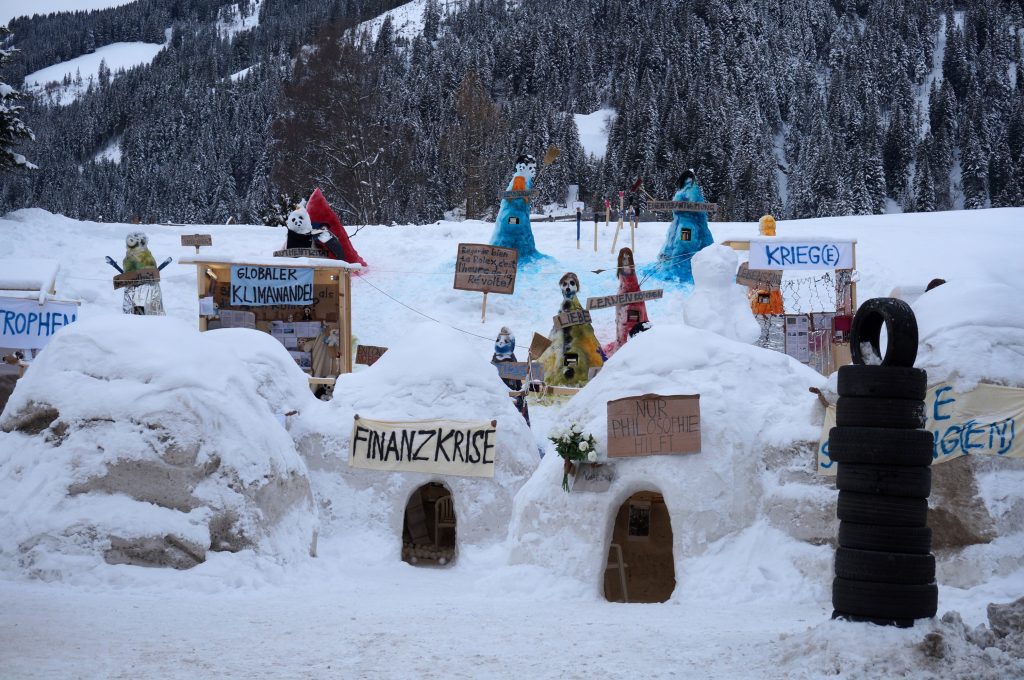
RP: What was the process like for Abschlag (2014) in Saint Petersburg?
TH: Kaspar König, the curator of Manifesta 10, proposed that I intervene in the freshly renovated and covered courtyard of the General Staff Building of the Hermitage Museum. This space, in its post-architectonic proposition between “old” and “real,” “inside” and “outside,” and “fake” and “real,” led me to think of a “reversed Potemkin village” of a collapsed Russian apartment building. Abschlag was made with the aesthetic of the Potemkin village and not with “ruin aesthetics.” The Potemkin village refers to Governor Potemkin who, in 1787, built fake villages along the Crimean peninsula before the visit of the Czarina, in order to hide the area’s real situation. Its goal, then as much as today, is to show a situation as better than it really is, and to be precise.
Abschlag is a reversed Potemkin village, which means that it shows a situation at its worst, as a ruin, a collapse, and not as it should be—at its best. The goal is to show and make visible—through destruction—the hidden links, masked connections, and unseen assemblage. I have in mind the words of Antonio Gramsci: “Destruction is difficult; indeed, it is as difficult as creation.” The cardboard building façade—with a height of 15 meters—was “cut off,” the wall collapsed, the skin of the building destroyed (the title Abschlag comes from there), which allowed one to see inside the apartments. Hanging on the walls of the now visible rooms, I exhibited five artworks on loan from the Russian State Museum in St. Petersburg: one painting by Malevich and two paintings each by Rozanova and Filonov.
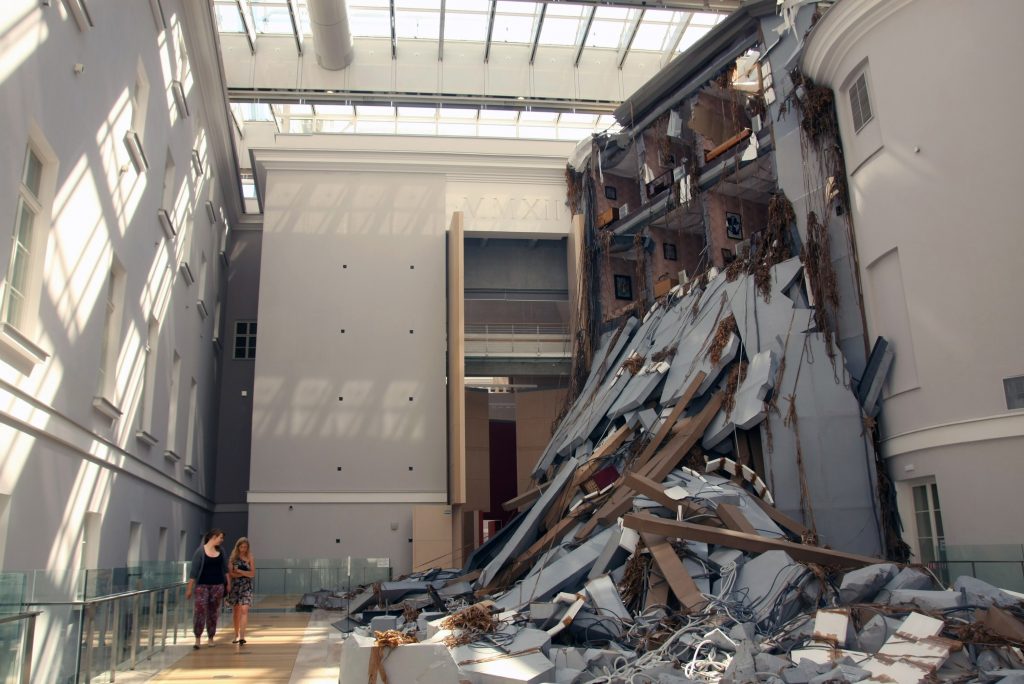
RP: How do you go about making? Do you work with a lot of initial sketches? About how many people are involved in the making, and what do they do?
TH: There is—for an artist—no distinction between “thinking” and “making.” It’s one movement, it’s one dynamic, it’s one moment—even when this moment is a long one. This is, I think, the beauty, and the absolute, in doing artwork. “To produce” means to understand art as an assertion, as a statement, as an act of emancipation, and as something that I authorize myself to do. I want to “give form”; therefore the making or the doing is only one step in the crucial mission: Giving Form. Form is the most important and essential question in art because it asks, How can I take a position? How can I give a form to this position? And how can this form create a truth? A universal truth?
Form is what gives ethic and clarity in the incommensurable, complex, and chaotic world we are living in today. The problem is to give my own form, something belonging to me only, which only I see and understand as such, something only I can give. I want to do an artwork in exaggeration and preciseness, a work that—in its charge and density—stands for a new form. I use the term “give form” because it means giving from my own; giving form is not “doing” or “making” a form. There are different numbers of persons involved in the process of giving form to an artwork: sometimes more, sometimes less, depending on the scale of the work.
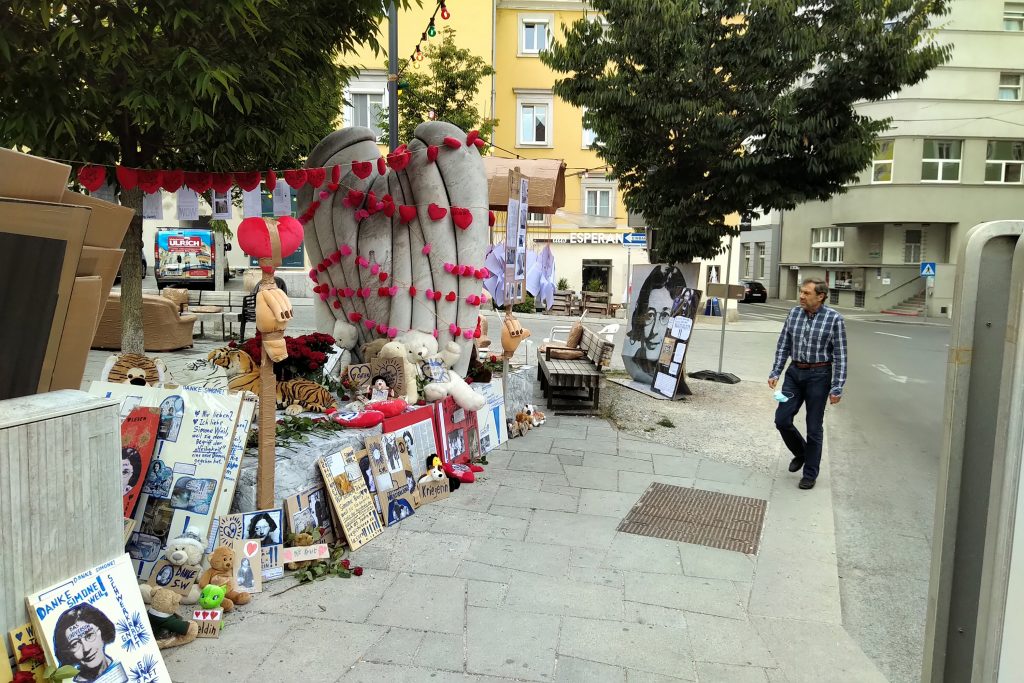
RP: How do you typically source materials in various places?
TH: My materials are more or less always the same: precarious materials, materials which are available, cheap materials, materials not usually used for making art, non-intimidating materials and materials without a “plus-value.” These materials are not difficult to source and can be found everywhere, all around the world. They are universal.
The decision for “my” materials is a very important one, and—like all artists—I have to pay the price for this decision, because it is essential, crucial, and because it’s a political decision. I do “fieldwork” for large projects in public space. Doing fieldwork is a constitutive part of my work in public space, especially with works in cooperation with residents, like the Gramsci-Monument (2013).
I try, in the “field” or on the street, to encounter others, residents, those not interested in art, passersby. Fieldwork is a very important part of “Presence and Production” artworks because without the agreement of residents nothing can be done. Doing fieldwork is a long-term, non-visible process, with its own surprises, luck, failures, successes, and mystery. Well-done fieldwork is the condition for building a “hard-core audience” for a work in public space.
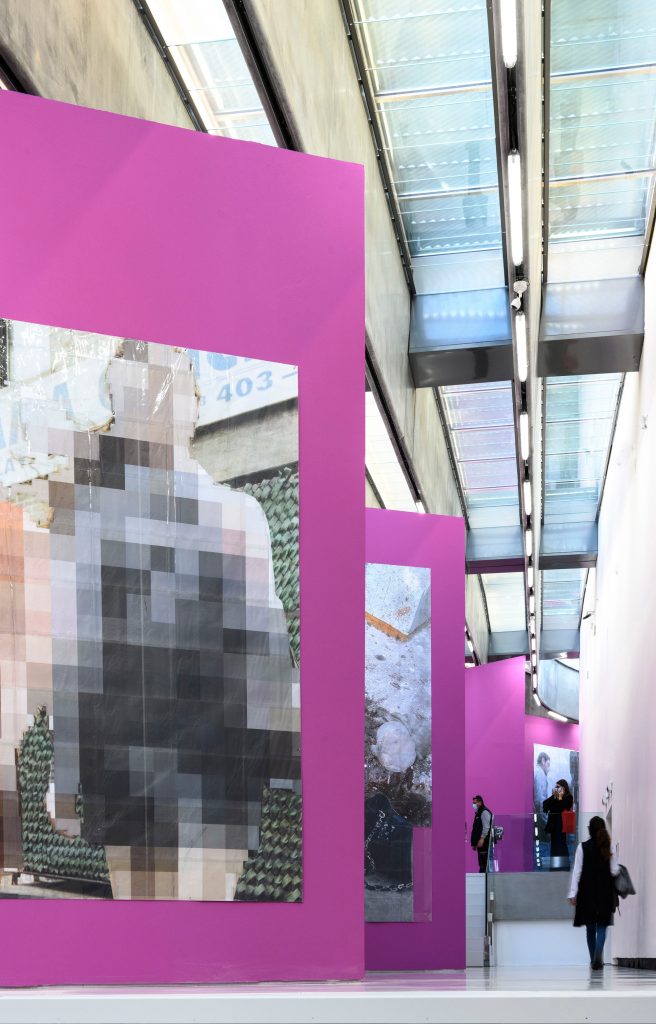
RP: How do you see your work today in relation to the state of things around you?
TH: I want, in doing my work, to insist on the very importance of art, and of philosophy and poetry, in our world, our own and unique world. I see my work as trying to stand up, as trying to be active. I am an activist of my own work, trying to get in relation with the world and—from the very beginning of my work as an artist—trying to emancipate myself. I want to be in relation with the world surrounding me. I want to relate to the world in giving form, my form. I want to confront the world’s incomprehensibility and uncertainty, not in bringing peace or quietness, but in working within the chaos and within the lack of clarity of the world.
My work of art is therefore the tool to engage, to create a relation with the world. I want to do something charged that reaches beauty in its necessity, in its emergency and its intensity. Something beautiful arises if there is an engagement, and if the mystery contained in this engagement remains. It is the autonomy and the absoluteness of the artwork that gives it its beauty. My work of art is the tool to confront the time I am living in, and my work is the tool to be in touch with reality, the reality of the world and my reality—as I tried to do with one of my last personal exhibitions, “The Purple Line” (2021) at MAXXI in Rome.
RP: I just had a memory from my first-year philosophy survey: Faith, or reason?
TH: Faith of course. Faith in art. Encouraged and empowered by—as a radical and singular example, Simone Weil—I have faith in the power of art, the power to transform each human being, from one to one.
“M.E.S.S.S.Y.,” Thomas Hirschhorn’s solo exhibition at Dvir Gallery in Brussels, is on view through July 1, 2023. His work is also featured in “Schema: World as Diagram” at Marlborough New York through August 11, 2023. And SAS de contamination, which has been reactivated for the first time since 2000, is installed at the Collection Lambert in Avignon, through October 15, 2023.



